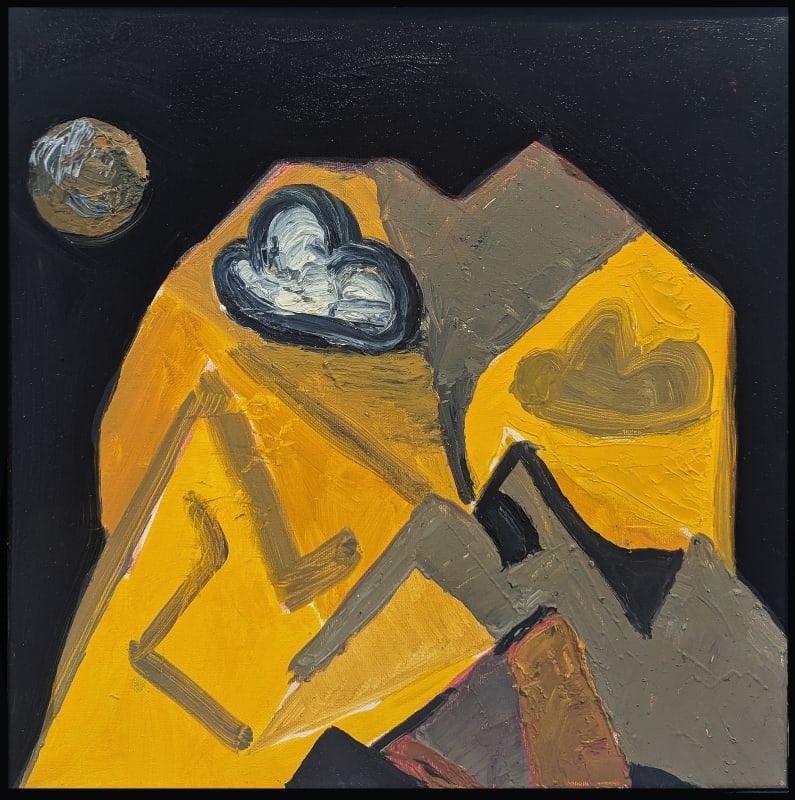“I see my works as parts of an interrelating manifold body, or even bodies, of work … mine and others … partial objects that feel as if they have a kind of electric connection to larger whole horizons of art.”
The masterful work of British artist Phil King is an ingenious entanglement, networked by tactile surfaces, intersecting lines, holes, impasto paint and a dance between abstraction and figuration. Spanning a period of over twenty years, the artist’s practice includes a wide range of styles and materials such as linseed oil, acrylic, vinyl, canvas and even welded steel framing.
Subjects are diverse and include powerfully expressive lyrical landscape with ties to Impressionism in the sense of a painterly evocation of a dream or an ideal world. The artist also produces studies of pattern and gesture as well as illustrative paintings that have a graphic character, described by King as an organic grotesque or an arabesque approach. The artist shares that quite early in his career he found himself engaged in the idea of ornament, and looked closely at rural African art, the Romanesque, philosophies of animation (anima) and notes that “the great compositional motors of classical art have meant the development of a real underlying confidence when I paint. I see gesture as a kind of proto-language - a way of direct communication - a form of acting and drama. I lose myself in my painting and find it full of surprise and gestural humour when I emerge.”
In some pictures, King has added found elements, and in others made holes allowing a dialogue to emerge between figure and ground relationships, for example in one painting the hole functions as a moon in the sky. The artist explains: “I find, maybe like Lucio Fontana that cutting into the picture opens it up to actual space. I used to know why the holes would happen but now they are very much part of the habitual materialisation of the paintings. Kind of a way to have a sign that is not actually there. There is also a sense of sacrifice and risk in making them that is quite compelling as a gesture or ‘act’… they open the pictures to life for me, I think. Obviously, they are sculptural too. The stuck-on elements are simple symbols, and speak to a sense of touch and placement too.”
In all of the various works as well there are details, areas, figures, calligraphic moments of gestural paint and movement that appear evocative of something of the past, perhaps it is what the artist calls the undiscovered land of Cézanne, the immersive cubic physicality of this place, an expressive chiaroscuro laid out sculptural paint. Maybe as well, it is the effortless gesture of Matisse, or the heavy idiosyncratic corporeal nature of Braque, and even still the brushwork of Pollock’s early work. The vernacular graphic character of Guston appears as if reworked and rethought. Whatever the moments of the past that may occur within the constellation of King’s work, the artist has summoned an entirely distinctive visual language and an approach to painting that is unparalleled among his contemporaries.
Rosa H. Berland




